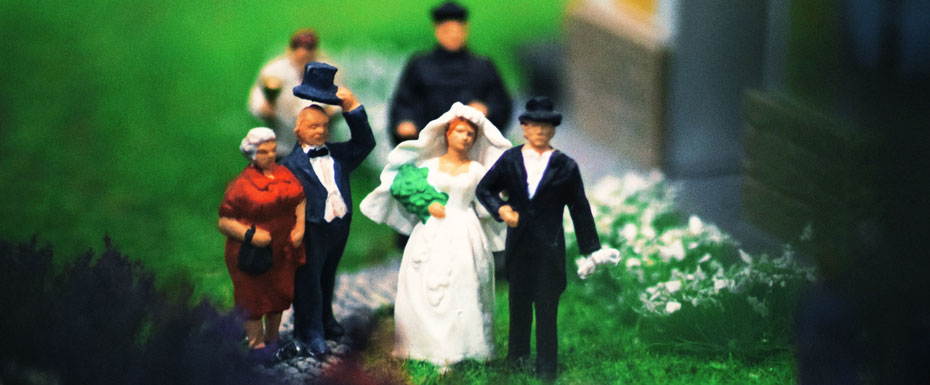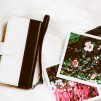
Miniature photography is not only a creative hobby. It’s also an excellent opportunity to master several genres of photography and practice taking close-ups. In addition, it will teach you to focus on the story and convey it correctly through visual images. Therefore, if you have never tried miniature photography, now is the right time because it’s becoming a trend.
What Is Miniature Photography?
No, this is not a small camera, small lamps, and a small picture. Everything remains the same, in full size. Only the world that you will photograph is shrinking. It consists of Lego-like figures, a set of toy soldiers, mini-animals, or chocolate kinder surprise figurines. The rest remains natural in size. That is, miniature photography is the process of creating small staged scenes. They can be serious or funny. The possibilities are almost endless! And the small size of your subjects gives you full creative control over the situation.
What Do You Need to Take Miniature Photos?
In this case, the photographer has the freedom to choose props, models, settings, decorations, but they also need certain equipment.
- Miniature Set
 The type of figurines that you will use depends solely on your desire. The only requirement is size. They must be small. You can buy a set of toy soldiers, tiny animals or use a Lego set – any miniatures will do.
The type of figurines that you will use depends solely on your desire. The only requirement is size. They must be small. You can buy a set of toy soldiers, tiny animals or use a Lego set – any miniatures will do.
- Camera
Ideally, this should be a camera with interchangeable lenses (both DSLR and mirrorless). It allows you to adjust the camera manually, giving you more creative options. A smartphone will work too, but it doesn’t have as many options as a camera. Consequently, it will limit the possibilities, which can be corrected by post-editing using special programs.
- Macro Lens
The ideal lens for miniature photography is the wide-angle lens. It provides the necessary sharpness of the frame. But if you don’t have one, any other macro lens that will allow you to shoot miniature photos without the traditional zoom will do.
- Tripod
In this case, it’s not a whim but a necessity. Stabilizing the position of the camera will give unlimited freedom of action for any camera settings. You can choose slower shutter speeds and smaller apertures without fear of jittering. A tripod will also help out if you need a series of sequential shots emphasizing a specific scene.
8 Tips for Great Miniature Photos
Turn on the Inner God
With miniature photography, you can take control all around. The size of the figurines gives freedom of action and the possibility of staging any frame. There are a lot of concepts and ideas! The detailed layout of the shots is just one of the opportunities that open up. You also have a chance to storyboard for longer sequences.
 Set the Correct Settings
Set the Correct Settings
These will determine the type of image you want to get. It is best to use manual mode, disable automatic functions, and rely on your intuition. In any case, there will be no blurry frames because the objects are inanimate and static. But it is better to choose a low ISO level and mount the camera on a tripod to apply a slow shutter speed. The key focus should be on the diaphragm:
- narrow will allow you to more accurately keep the scene in focus and provide a greater depth of field;
- wide will create a soft bokeh effect and shallow depth of field that works well with macro shots.
Therefore, first, think carefully about what you would like to emphasize in your miniature photography.
Create Your Own Studio
Tiny objects, like doll accessories, can fit just on a table or even in a model of a building, house, or room. Therefore, there’s no need to rent large areas. Just clear a suitable spot and equip it. A bonus is a natural light. Additionally, you need to take into account the location of the photo equipment. The background doesn’t have to be white; anything that keeps the mood of a miniature photo works fine. Even plain paper will do. Use a portable studio box when taking your product photography.
Find the Right Light
In this case, you do not need a complex flash system – even ordinary home lighting can be used for miniature photography. Directional lamps are ideal because they provide enough bright light. And it’s easy to change them – rearranging them from place to place. But there should be several lamps – at least two to smooth out the effect of harsh shadows. If you need water or reflections, use mirrors. For spectacular light spots, choose multi-colored plastic or paper of a suitable color.
Repeat a Movie Scene
Setting these shots will help you practice composing your miniature photography. The easiest way is to start by copying real scenes from the movie and then move on to creating an individual style.
Try Using the Environment
For example, let all adjacent objects be of real size. That is, in miniature photography, a smartphone can easily become a huge electronic mechanism, and broccoli can become trees. Tiny figures against such a background look interesting and even futuristic. This technique is good if you are conducting a miniature photo session in a humorous manner.

You can also take the figurines outside and take miniature photographs on site. This will highlight a new look at the macrocosm. Small flowers will become giant trees, and ordinary puddles will become deep lakes. Explore new spots for miniature shots by introducing natural elements into epic compositions.
Make Your Own Props
If you love crafts, this option is for you because creativity is limitless. First of all, choose your own props. It can be clippings from newspapers or postcards, origami, pieces of wood, fabric, metal, plasticine – all can make original decorations. This also includes self-made figurines.
Move on to Stop-Motion Animation
Taking miniature photographs is the basis for time-lapse animation. It’s the next logical step in the miniature genre. Hence, create scenes from a cinematic point of view. For such a process, no complicated software is required: ordinary Adobe Photoshop is enough to join frames, although it will be more convenient to work in Dragonframe.
A miniature photograph combines several genres of photography: this is subject photography, and still life, architectural, and macro photography. In any case, the process is always fun and exciting. After all, you get full creative control and master not only one but several types of work with photographs. And you can use whatever you want and the way you want, conveying an individual view of familiar things. Or you can even animate them with stop motion animation. Feel like a god!





